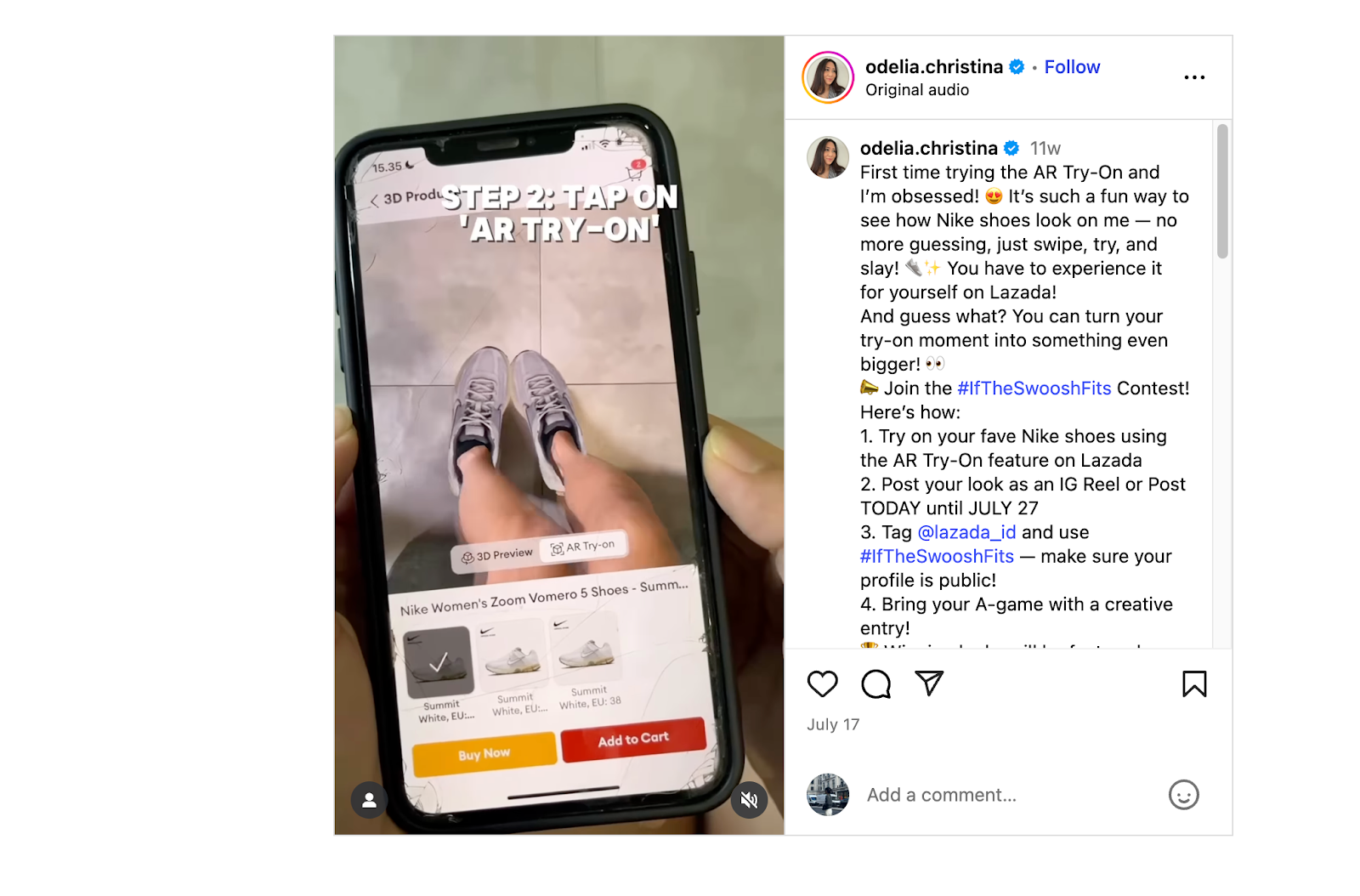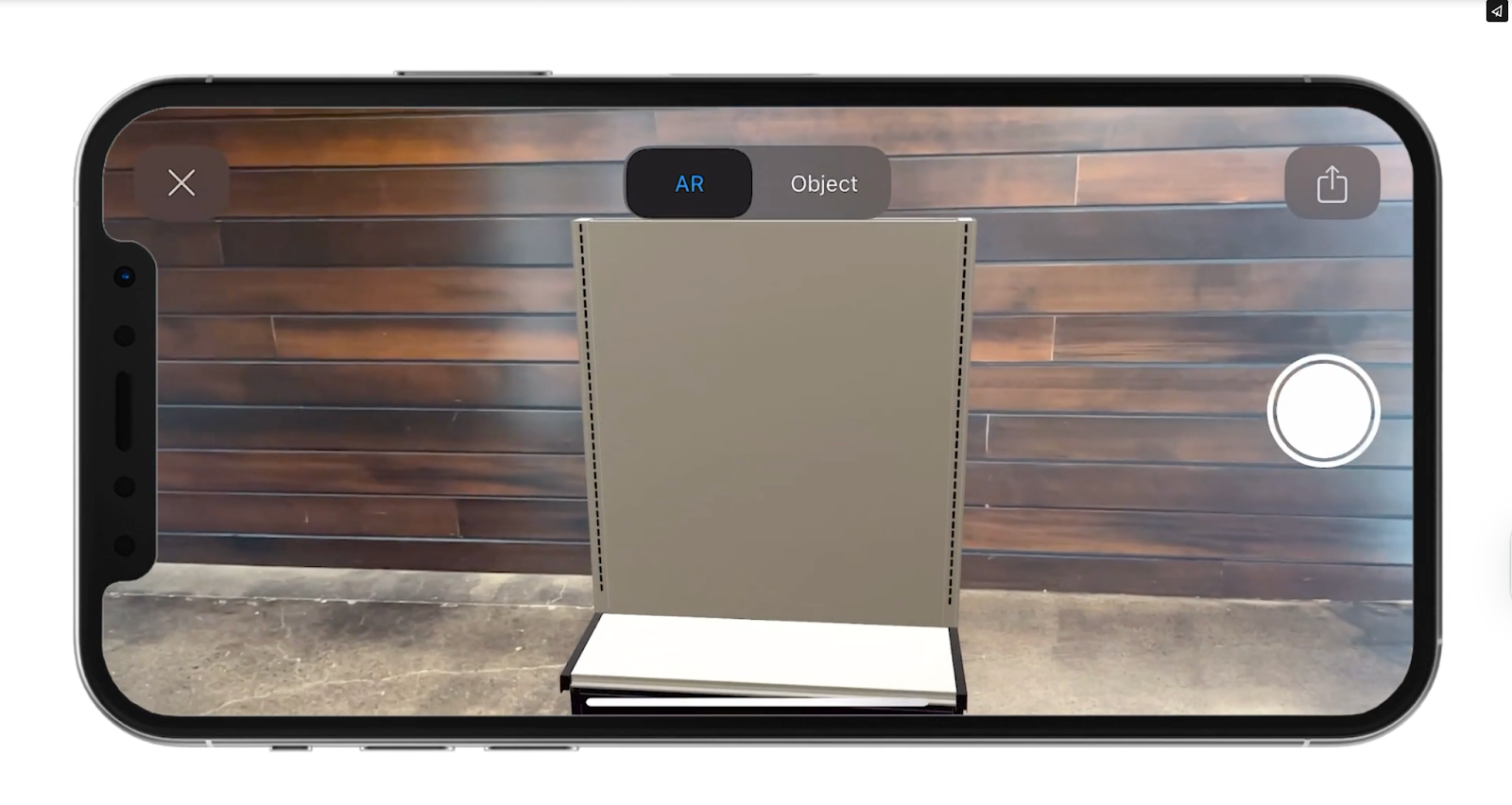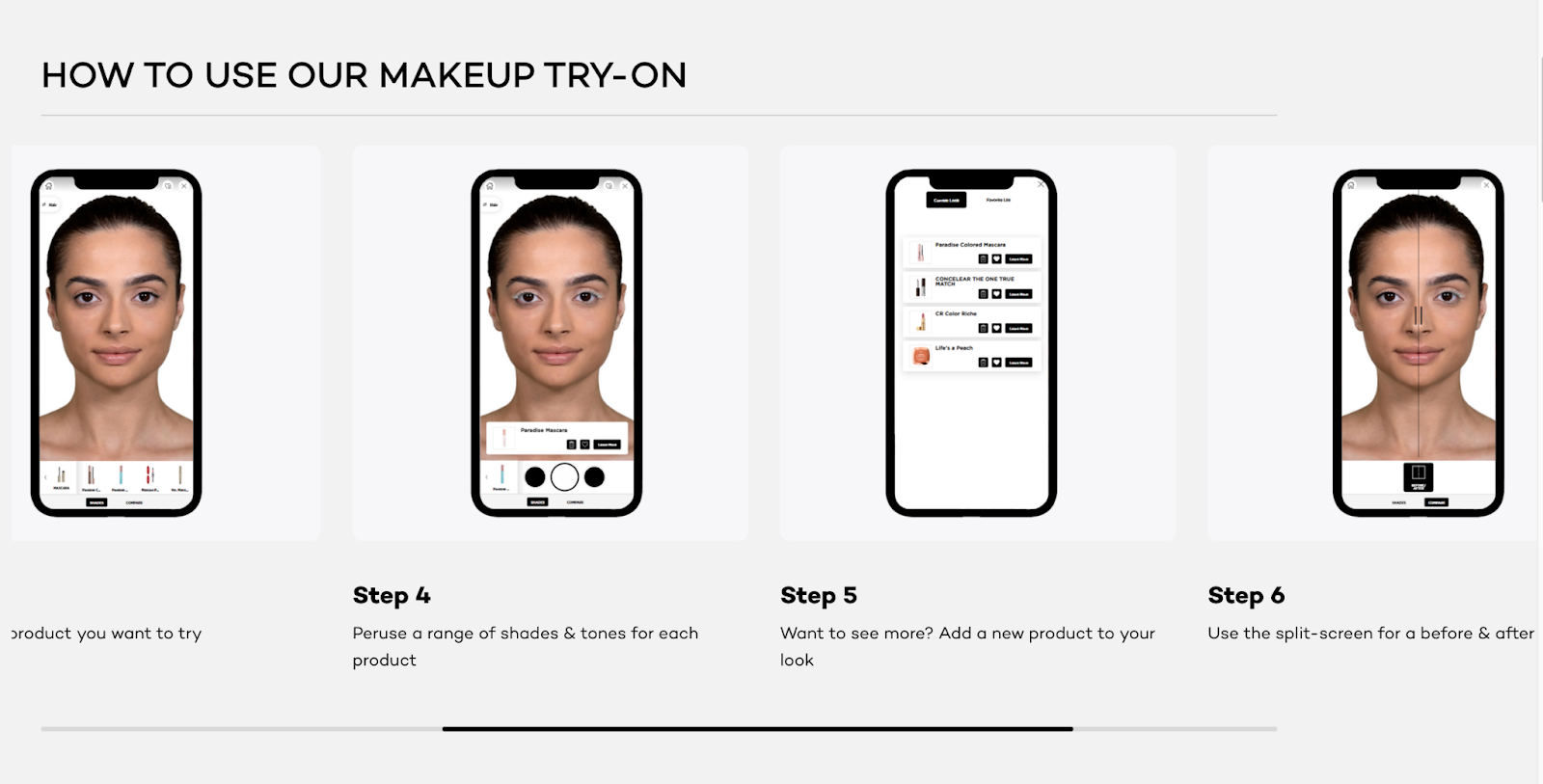If your brand wants to stand out in the dynamic eCommerce and retail landscape, offering your customers immersive, unique shopping journeys is no longer optional. AR VR solutions are now considered “emerging but potential” innovation approaches to transform how you attract, engage, and convert buyers—they further improve your sales.
The global market for AR VR services is projected to reach USD 826.63 billion by 2032, signaling massive adoption across retail, manufacturing, and marketing. Apparently, customers aren’t just ready for these experiences with your business; they expect them.
This guide is your detailed roadmap to understanding the following key perspectives:
- The main types of VR AR solutions for B2B and B2C brands
- What to look for in a reliable solution and provider
- Real-world AR VR applications
- Future trends shaping immersive marketing and boosting sales.
Let’s dive in now!
Types of Augmented Reality and Virtual Reality Solutions for Brands
Augmented reality (AR) and Virtual Reality (VR) are high-impact tools that bridge the gap between digital and physical spaces, letting users experience true-to-life feelings. While augmented reality for retail and eCommerce focuses on enhancing real-world interactions, for instance, enabling the ability to visualize a sofa in the home and office, VR takes immersion a step further by transporting users into fully virtual environments.
However, AR VR solutions involve a range of types, whether you work in any industry. Therefore, you need to clarify the most common types to get the best fit for your needs:
1. Web AR & VR
Web AR/VR delivers immersive discovery via a website browser; it doesn’t require a separate app download or installation, but a proper device. Moreover, this type is easily shareable, highly scalable for vast eCommerce catalogs, and accessible across devices.
Best for: augmented reality product visualization, interactive, immersive product demos, 3D product visualization, 3D product viewing and testing, and 3D product configuration.
3D product configurators with built-in AR/VR are all-in-one AR VR solutions that combine next-level product visualizations. Customers can freely design products in real time, choosing colors, modules, and finishes, and preview them in their own spaces or a virtual room by scanning QR codes with their mobile devices, such as phones or tablets.
From that, they can gain full ownership of their designs without salespeople and a clear understanding of what the final product will look like and fit. This transparency helps you minimize mistakes, reduce return rates, and increase customer satisfaction and loyalty. That’s why this AR VR application works exceptionally well for complex, high-value, and high-configurable products, like custom furniture, kitchen cabinets, and retail displays.
2. Mobile App AR/VR
Some brands build a dedicated mobile reality app or integrate AR/VR technologies into their existing one. Mobile apps allow users to work with richer visual fidelity, impressive interactions, and personalized engagement via push notifications and saved sessions. However, implementing VR or AR for marketing purposes with mobile devices should be done professionally, ensuring a fast-loading, seamless journey for customers.
Best for: Established brands with loyal app users, or those running subscription-based or membership models who want to provide continuous, value-added, and interactive experiences.
3. Product Try-On
Virtual try-ons are one of the most popular uses of augmented reality marketing. They let shoppers “try before they buy” using their mobile cameras, seeing how an item looks on themselves, not in the real world space, like how web AR/VR applications support us.

Best for: Fashion, cosmetics, accessories, eyewear, and footwear brands aiming to utilize augmented reality in marketing to increase engagement and minimize product returns.
4. VR Experiences
VR creates fully immersive environments that everyone can step into. Most VR solutions can stimulate showrooms, tradeshows, training centers, and even branded virtual worlds. Therefore, many businesses use them to offer B2B presentations, real estate showrooms, or high-end retail environments, where customers want to explore products immersively.
Best for: Businesses that want to create emotional connections through storytelling.
5. In-store & On-site AR/VR
These AR VR solutions leverage the significance of digital and physical experiences. Shoppers can use AR mirrors to “try on” outfits, scan products for instant information, or explore new collections through VR booths. Brands can then effectively entertain buyers through virtual and augmented experiences (mixed reality technology), boost dwell time and conversion rates, and transform ordinary shopping trips.
Best for: Beauty retailers or grocery stores looking to enhance in-store engagement.
What Brands Need from AR VR Solutions: Key Features & Evaluation Criteria
When choosing AR VR solutions for your business, let’s focus on more than just the visuals. The best platform should be robust, scalable, affordable, and easy to integrate.
Below are what to look for first:
- 3D asset management: Support lightweight 3D model formats and easy editing.
- eCommerce integration: Sync with your current eCommerce platforms, such as Shopify, WooCommerce, and Magento, ERP, or CRM for smoother workflows and enhanced collaboration across teams.
- Performance: Load quickly and accurately across devices (mobiles/desktops).
- Scalability: Handle a massive catalog, heavy traffic, and concurrent sessions.
- Analytics: Track views, engagement time, configuration choices, and conversions.
- UX/UI: Offer customization options with a user-friendly interface.
- Cost efficiency: Enable apparent subscription, royalty, or custom-build options.
Real-World Case Studies: 4 Brands Doing AR/ VR Right
#1. Grand + Benedicts: 3D Configurator with AR Experiences
The first augmented reality marketing example today is a 3D shelving configurator provided by Grand +Benedicts and VividWorks to leverage the sales of modular shelves. This AR/VR solution lets customers freely configure every detail, such as size, color, finish, add-ons, and back panels, for their desired designs. Thanks to Visual Configure, Price, Quote (Visual CPQ), every customization will be reflected instantly and precisely.

It’s time for the power of AR here: Beyond 3D previews, users can project their shelves directly into a real-world retail environment using AR technology through a QR code. From that, you will have a comprehensive understanding of the shelves and evaluate how the finalized design matches the store before committing to an official purchase.
This application works for: You sell made-to-order products that are complex, highly modular, and costly for return and rework (e.g., furniture, kitchen units, retail displays).
#2. L’Oreal: A Makeup Try-On App with Mobile Devices
L'Oréal, through its acquisition of Modiface, L'Oréal has deployed camera-based AR try-on experiences. In other words, the developers use advanced face-tracking and rendering technology to let users try on numerous products, like lipsticks and hair colors. However, you need to use your phone camera and have mobile logins, NOT via desktops.

This application works for: You sell anything that shoppers wear/ try on themselves, like fashion, makeup, and accessories, and would generally like how they shop in the store.
#3. Sankyo Frontier: Leverage User Experience With An Immersive Tour
Sanky Frontier, a leading modular space provider in Japan, partnered with VividWorks to launch the Mobile Space Simulator to transform client experiences with space designs.
After selecting options such as walls, windows, and stairs for your own space, you can thoroughly experience the created 3D model immersively, thanks to built-in AR and VR. In other words, these realistic virtual, true-to-life representations of Sankyo’s modular buildings can engage customers effectively and ensure accurate design visualizations.
This application works for: You sell kitchens, construction, and home buildings, but you want to take full advantage of VR/AR to enable clients to explore design interactively.
#4. Tesco Discovery: A Shopping App With AR to Gamify In-Store Shopping
Tesco, a major global retailer, uses AR to make shopping fun and engaging, especially for families. As users walk through the store, they can scan products or shelf markers to reveal hidden characters, play mini-games, and earn rewards or knowledge about them.

This application works for: You want to utilize augmented reality solutions or games with rewards/ knowledge to encourage customers to download and join your current apps.
Top AR & VR Solution Providers: Comparison & Profiles
#1. VividWorks
Specialization: 3D configuration software and AR/VR technology for retail and manufacturing.
Key Features:
- Real-time 3D product configurator and visual CPQ (Configure, Price, Quote).
- AR-enabled eCommerce experiences that require no additional app installation.
- Seamless integration with eCommerce platforms, ERP, CRM, and PIM systems.
- High-quality visualization, customization, and intuitive interfaces.
- 3D room planner to project an ideal space with accurate dimensions and layouts.
- Friendly budget pricing, starting from 247€/month and including custom plans.
Industries Served: Furniture, kitchen & bath, building supplies, and eCommerce.
#2. MagicLeap
Specialization: This AR VR solution provider stands out with robust AR headsets.
Key Features:
- The Magic Leap 2 headset is designed for enterprise applications.
- Focus on data privacy, cloud autonomy, and device management.
- Supports immersive experiences for developers and enterprises.
Industries Served: Enterprise, Healthcare, and Industrial sectors.
#3. Euphoria XR
Specialization: Virtual & augmented reality for marketing under tools, apps, and demos.
Key Features:
- Full VR and AR experiences for large-scale events and promotions
- Custom AR lenses for social media, interactive packaging, and fan engagement
- Full-service creation of 360-degree videos and interactive applications.
Industries Served: Entertainment, Games, Events, and Trade Shows.
What’s Next in AR VR Solutions for Brands
If you want to stay ahead, you need to keep an eye on the most critical emerging trends. Let's take a look at these reality technologies:
- AR-Powered Retail Experiences
The integration of AR into the shopping journey will only deepen. Seeing augmented reality for retail will include try-on, personalized, location-based information, smart navigation within stores, and dynamic pricing displays based on customer interaction.
- Integration of AI with AR/VR
Artificial Intelligence will act as the brain for AR/VR experiences. AI will enable highly personalized suggestions within an AR try-on or instantly render highly detailed 3D assets from simple 2D images. This effectively minimizes the cost of content creation.
- WebAR and Cross-Platform Applications
This tendency can embrace a clear winner for brands focused on conversion and reach. Removing the friction of an app download is the most significant growth driver for AR advertising and eCommerce-focused AR, satisfying users who prefer app-free discovery.
How to Choose the Right AR/VR Solution for Brands
This checklist helps match your business’s goals with the correct VR AR solutions:
- Define your business goals (engagement, sales, training, or visualization).
- Identify your target users and platforms (web, mobile, headset).
- Choose a trustworthy AR VR solution provider.
- Assess scalability and integration options.
- Evaluate 3D content quality and ease of updates.
- Check analytics and performance metrics.
- Compare pricing models and licensing terms.
- Test a demo before full rollout.
Talk to us to see how leading AR VR solutions can enhance your customer experiences, drive tangible results in conversions and sales, and help establish a strong brand identity.
Table of Content
-3.avif)
Streamline your process today!





.png)
